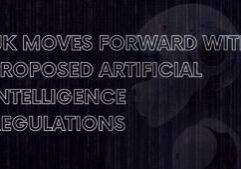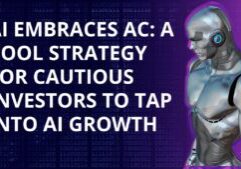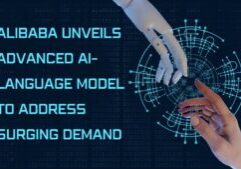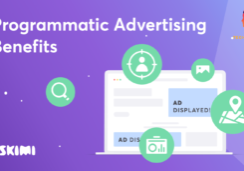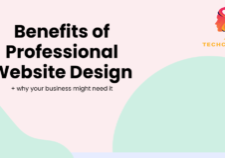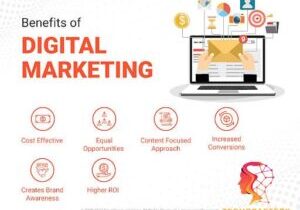Professional Website Builder
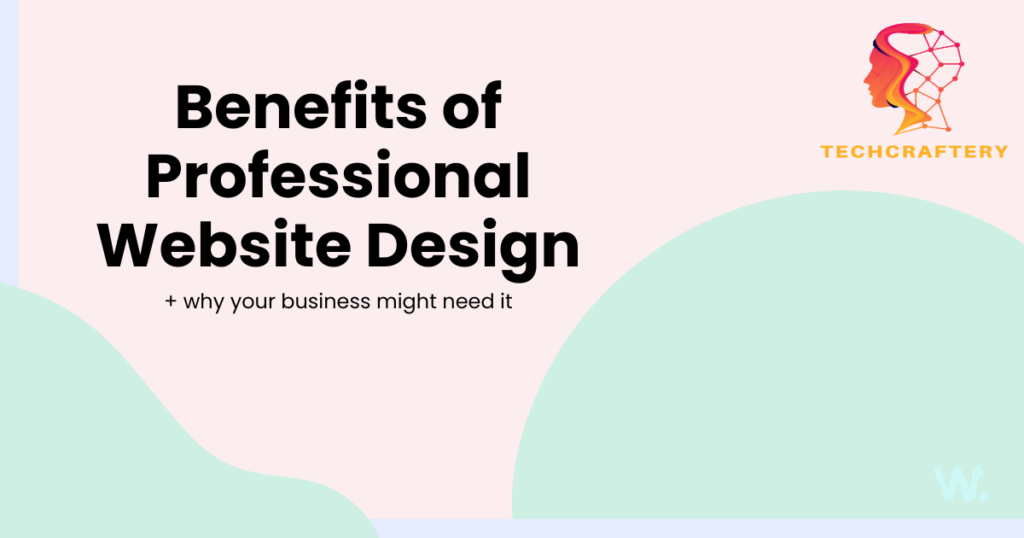
Professional Website Builder
Web design has come a long way since the first site was published in 1991. With over one billion live websites on the internet today, it’s no surprise that this industry is here to stay. Techcraftery is home to thousands of website design professionals, enthusiasts, and designers who are empowering the industry to reach new heights. So, if you’re here to learn more about the world of web design, you’ve come to the right place.
As a preliminary to learning how to design a website, this article will hone in on the role of web design and go over helpful tips by defining critical terms and ideas, and looking at examples that will give you further insight.
01. What is web design?
Web design is the art of planning and arranging content on a website so that it can be shared and accessed online with the world. A combination of aesthetic and functional elements, web design is a type of digital design that determines the look of a website—such as its colors, fonts, graphics and user interface (see our guide on website design best practices).
Today, creating a website is one of the pillars of having an online presence. Because of this, the world of web design is as dynamic as ever. It is constantly evolving, including mobile apps and user interface design, to meet the growing needs of website owners and visitors alike.
Web design is often a collaborative process that combines knowledge and tools from related industries, ranging from web design statistics to SEO optimization and UX. Web designers will often bring together professionals from these areas who can optimize performance and focus on the larger process and outcome.
02. Web design vs. website development
The first step in our web design journey is to clarify the difference between web design and website development, since the two are closely related and often (mistakenly) used interchangeably:
Web design refers to the visual design and experiential aspects of a particular website. We’re going to dive into more detail about web design throughout the rest of this article.
Website development refers to the building and maintenance of a website’s structure, and involves intricate coding systems that ensure the website functions properly.
The following are some basic markup languages most commonly used by web developers to build a website:
- HTML or Hyper Text Markup Language, is a coding language used to create the front end of websites. It is written to include the structure of a web page and carried out by web browsers into the websites that we see online.
- CSS or Cascading Style Sheets is a programming design language that includes all relevant information relating to a webpage’s display. CSS works with HTML to design the style and formatting of a website or page, including the layout, fonts, padding, and more.
However if you use a CMS or a Content Management System (a computer software application that manages the digital content of a website) you can learn how to make a website and make updates without the knowledge of using code. Techcraftery is an example of a CMS, which functions as a user-friendly system for website content development.
03. Web design tools
Web designers require their own unique set of tools to create and design. There are a few key elements that will determine which types you’ll use, and at which stage you’ll need them.
Here are a few questions to consider: How big is your team? Will you create an adaptive or responsive design? What is the purpose of your website? The answers to these questions will also help you understand which kind of website builder you want to work with, or other design software tools.
Techcraftery, a code-free website builder, offers industry-specific templates. Ideal for novices, it provides customization in visuals and functionality. For advanced users, Techcraftery Studio offers enhanced features for layouts, interactions, effects, and design assets.
Design software tools such as Figma, Photoshop and Sketch can be used to create wireframes, custom features and design elements. However, the major difference with these tools is that all elements must be converted to code. While these tools offer creative flexibility and collaborative integrations like hand-off features to web developers, they can require more time, knowledge and resources.
As you gain more experience with a range of web design tools, you’ll know which are best suited to you and your business needs.
04. Principles of design applied to websites
To grasp web design, understand the principles of good design used by artists. Apply these principles for a harmonious website look and feel. While not strict rules, they guide both beginners and experts. As Picasso said, “Learn the rules like a pro, so you can break them like an artist.” Once you’re familiar, add a creative touch to your approach.
Let’s explore the following principles:

Balance
Visual balance in web design ensures no element dominates. Imagine a center line and distribute elements equally. Two approaches:
- Symmetrical balance mirrors each side, evoking balance and consistency.
- Asymmetrical balance maintains equal visual weight but varies element composition, creating a dynamic, modern, and harmonious web design.

Contrast
Contrast in design accentuates differences: dark vs. light, smooth vs. rough, large vs. small. When contrast is in the picture, it’s dramatic and exciting qualities can captivate visitors as they scroll through your site.

Emphasis
The principle of emphasis reminds us that not all website elements are equal. For key elements like logos or CTAs, use emphasis techniques. Bright colors, animation, or size can make them stand out as the focal point on your webpage.

Movement
When applied to web design, movement is what guides visitors from one element to the next. By controlling the size, direction, and order of elements on an individual web page’s composition, you can direct the movement of the viewer’s eye throughout your site.

Rhythm
Rhythm refers to the repetition of elements in order to create consistency, cohesiveness, or to amplify a certain message. Repeating characteristics such as your logo, brand colors, including complementary colors, and using the same typeface, will also strengthen your brand identity and presence on the web.

Hierarchy
Avoid placing your business name at the bottom of your homepage—it’s poor design. Following the hierarchy principle, important content, like your business name, should be prominently placed for immediate visibility and interaction, enhancing user experience.

White space
In design, empty areas are called white space, even if not white. In web design, arranging white space is crucial. It gives visual elements room to breathe, aids in achieving goals like hierarchy, balance, and emphasis.

Unity
Unity in web design is the harmonious result of individual elements, aiming to prevent visitor overwhelm or confusion. Achieving a unified design involves strategic placement and purposeful inclusion of elements, ensuring each contributes to the site’s function and performance

05. Website layouts
Website layout is foundational, determining visual arrangement and sequence on each page. This step influences visual appearance, usability, and message amplification. Choose the best layout based on website goals, intended message, and content type.
- Layouts to accommodate your content: The layout you choose should be fitting for the type of content. For example, if you want a layout that will showcase products you might go for one that leaves ample space for highlighting images. A blog layout, on the other hand, will need to convey new information in an organized way.
- Common layouts: There are plenty of tried-and-tested website layouts out there. These tend to feel familiar to users, as they build on their existing expectations or past experiences of other websites. Since they may result in a more intuitive, easy-to-use interface, they can be great for beginners.
Website functionality encompasses speed, ease of use, and available actions. Modern web design tools have evolved significantly, ensuring efficient and user-friendly websites. Utilize these tools to guarantee optimal website performance.
Let’s go over the components of web design that will affect how your site functions:
Navigation
Website navigation is vital for users to find pages easily. Incorporating a navigation menu in your design ensures smooth navigation between pages and sections, enhancing the overall user experience.
Depending on your site’s design, you might choose between the following types of menus:
- Classic navigation menu: This popular menu type is placed in the website’s header, presented as a horizontal list.

- Sticky menu: Also known as a fixed or floating menu, this menu stays put as visitors scroll down the site.

- Hamburger menu: A hamburger menu is an icon made up of three horizontal stripes that opens to a full menu once it’s clicked.

- Dropdown menu: A menu in which a list of additional items opens up once visitors click on—or hover over—one of its items.

- Sidebar menu: A list of menu items located on the left or right side of a webpage.

Speed
Website speed is crucial for user experience. Slow loading times, over 3 seconds, lead to a 38% increase in bounce rates. Despite a beautiful design, a slow website hinders competition. Various factors influence page loading times, but proven practices and tools exist to audit and enhance performance. Explore Techcraftery Performance for more insights.
SEO
SEO, or search engine optimization, is the process of optimizing a website so that it ranks well on search engines. Since it plays a big part of your website’s success, we think it deserves to be included here with the functional elements. The more people who are able to find you on Google means the more visitors you’ll have using your website.
Although SEO is an ongoing task, there are steps you can take to integrate website design with SEO from the get-go. For example with Techcraftery’s SEO solutions, your site’s built-in infrastructure will already support positive performance.
There are a number of common SEO practices you can take before hitting publish, too: include headings in your content, add alt text to images, use meta descriptions on relevant pages, and choose a domain name that represents your brand or business.

UX
UX design, or user experience, has evolved since the 1980s to enhance how humans interact with technology. Often interchangeable with “user interface” and “usability,” UX designers focus on a broader vision. They perfect products by considering branding, design, usability, and overall function, contributing to the user’s journey.
The process of is meant to ensure that a website encompasses high-quality interactions, content, products and services, by improving these seven factors:
- Useful
- Usable
- Findable
- Credible
- Desirable
- Accessible
- Valuable
Adaptive design vs. responsive design
Mobile devices contribute to over half of online traffic, emphasizing the need to optimize websites for small screens. Two approaches for adapting web design to mobile are adaptive design and responsive design. Understanding the difference is crucial when selecting a website builder, as most platforms support one of these two styles.
- Adaptive design involves creating different versions of the same website, where each can adapt to a different size screen, or browser width. For example, with Techcraftery, our users can arrange the layout for their site’s desktop version, and will be provided with a mobile website adaptation that is customizable.
- Responsive design involves creating websites with a flexible grid. This creates a dynamic appearance, depending on the screen size and orientation of the device used to view it.

07. Visual elements of web design
Visual elements are crucial for a website’s look and feel, impacting user experience and brand identity. From colors and fonts to videos, these details enhance the overall design. In the era of skim reading, ensuring each element stands out is vital. This section explores visual aspects of web design and provides tips for making aesthetic decisions.
Website header
A website header refers to the very top section of a website page, and is the first thing visitors see when they arrive at a site. In such a strategic location, a header is generally used to display a navigation menu, business name, a logo or contact information.

Website footer
A website footer is located on the bottom of the page and is fixated every page of your site. Since it’s the last thing visitors will see, it’s a good place to add and repeat important information they may have missed, without taking up too much visual real estate. A footer is also a common place to include contact details, a map, an email sign up bar, or social media buttons.

Color scheme
When it comes to web design, your website color scheme will set the tone for your site. Not only that, but splashing a branded color scheme strategically throughout can play a key role in strengthening your online branding.
When determining a site’s color scheme, decide which hues will represent your primary color (the one that’s most dominant on your site), secondary color (used consistently, albeit more sparingly than your primary color), and the accent colors (used in clever ways to highlight certain details of your site).

Typography
Typography refers to the visual aspects of type, such as the choice of font and arrangement of text. A crucial part of web design, typography can be used to complement a website’s aesthetic style, or to strengthen the written messaging throughout a site.
When choosing the best fonts for your website, consider the fact that typography can be as important as the words themselves. You’ll want to choose fonts that are readable, suit the stylistic theme of your site, and above all—on brand. Similar to a color scheme, you can pick primary, secondary and accent fonts to direct the way a visitor experiences your written content.
Website background
Setting the tone for your page, the website background plays an important role in web design. Whether it’s static or animated, solid or textured—the background is what follows visitors consistently as they scroll.
You can upload any image or video to become your website background, use a brand color, go for a trendy gradient background or opt for a minimalist theme and leave it white. Whichever you decide, make sure it fits into the overall visual theme of your site and grabs visitors attention without being too distracting.
One way to add more excitement to a background is by implementing scrolling effects, such as parallax scrolling—a trendy favorite of both professional web designers and beginners.
Imagery
In just a few seconds, your website imagery can strengthen the message you send to visitors. This might mean displaying your business’s products or location, uploading photos from an event, including a branded favicon, or using an icon maker to add a bit of flair to your site’s design.
Techcraftery provides a rich library of free visual content – from stock photos to collections of innovative designs, like the transparent videos we purchase from some of our talented users. When working on a web design, our users also have the ability to upload their own images, stock photos from sources like Unsplash, custom animations or vector art.
08. Website maintenance
The web design industry is one that’s constantly introducing new features, tools and solutions. The down side of this quickly evolving world is that it requires you – and your website – to stay constantly up-to-date and implement a website maintenance plan.
After you’ve completed your first design, you’ll eventually have to update your website to ensure the content is relevant, and the design is not obsolete. While seemingly futile, any outdated elements on your website can negatively impact your visitors’ interactions, resulting in decreasing overall performance and sales.
Check in on your website at least once a month to make sure there are no bugs, everything works properly and that your information is current. When considering a redesign, think about the changes you can make to keep your web design relevant, improve it’s ease of use, or amplify its performance. This might mean adding fresh visual content, an extra page, working on SEO, or performing an accessibility audit.
09. Web design inspiration
Now that we’ve covered the basics of web design, it’s time to seek creative examples. Web design inspiration is everywhere, and we recommend you regularly browse through sites like Behance, Awwwards, and Pinterest to find new ideas.
Here at Wix, we’ve got our finger on the pulse of web design trends, and are constantly on the lookout for the best websites made by users. We love seeing what these proud website owners do with our product – from artists to small business owners, and everyone in between.




